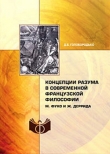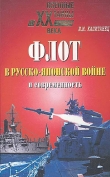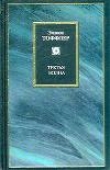
Текст книги "Война и антивойна"
Автор книги: Элвин Тоффлер
Жанр:
Философия
сообщить о нарушении
Текущая страница: 26 (всего у книги 27 страниц)
См. также [329], главу 4: «A Market for Spies».
С. 229. Сведения о Калугине: [10], с. 483–484, 525–527.
С. 230. Российская «Академия государственной безопасности»: интервью с Калугиным.
С. 221. Редакционная статья насчет «вполне под контролем»: New York Times, March 18, 1993.
С. 233. Новые «продукты» разведки: «Staying in the National Security Business: New Roles for the U. S. Military» by John L. Petersen, Proceedings of First Symposium on Open Source Solution, Inc., Washington, D. C., December 1–3, 1992, Vol. I.
C. 233. «Пункт продажи» разведданных: «Intelligence in the Year 2002: A Concept of Operation» by Andrew Shepard, Proceedings of First Symposium on Open Source Solution, Inc., Washington, D. C., December 1–3, 1992, Vol. I.
C. 233. План Кодвиллы: «ТЬе CIA, Losing Its Smarts» by Angelo Codevilla, New York Times, February 13, 1993.
C. 234. Зерно и полова: проблемы оценки эффективности разведки обсуждаются в «Intelligence and U. S. Foreign Policy: How to Measure Success?», by Glenn Hastedt, International Journal of Intelligence and Counterlntelligence, Spring 1991, c. 49–62.
C. 235. Смена требований к разведке: [26], с. 190.
С. 235. Прецизионная персональная разведка: [90], с. 137.
С. 236. Наведение на террористов: «Visualizing Patterns and Trends in Data» by Christopher Westphal and Robert Beckman, Proceedings of Symposium on Advanced Proceeding and Analysis Steering Group (Intelligence Community), Tyson Corner, Virginia, March 2–4, 1993.
C. 236. «Аналитик сайенс корпорейшн» (TASC) о мониторинге продаж оружия: там же.
С. 239. Издержки секретности: Keyworth в Proceedings of First Symposium on Open Source Solution, Inc., Washington, D. C., December 1–3, 1992, Vol. I.
C. 240. Материал Стала взят из интервью с ним и из следующих его статей: «Applying the New Paradigm: To Avoid Strategic Failures in the Future» American Intelligence Journal, Autumn 1991; «E3I: Ethics, Ecology, Evolution and Intelligence» Whole Earth Review, Fall 1992; а также множества статей в «Intelligence – Selected Readings – Book One», Command and Staff Collee, U. S. Marine Corps, Marine Corps University. См. также «Welcoming Remarks», First Symposium on Open Source Solution, Inc., Washington, D. C., December 1–3, 1992, Vol. I.
Глава 18. ПодкруткаС. 247. Пропаганда в Древней Греции: [371], с. 31.
С. 247. Dezinformatsia: [345].
С. 247. Немецкая медаль: [371], с. 165.
С. 248. 29миллионов листовок: [407], с. 537.
С. 249. Прусский «людоед»: [371], с. 166.
С. 250. Демонизация: [372], с. 6–7, 140, 211.
С. 250. С нами Бог: [240], с. 102.
С. 253. Шесть недель на ТВ: [349], с. 123.
С. 254. Телевидение захватило власть: «Lere du Soupaon», Ignacio Ramonet, Le Monde Diplomatique, май 1992 г.
С. 256. Битва при Новом Орлеане: [354], с. 220–221.
С. 258. «Медиатизация»: «La Guerre du Golfe na pas en Lieu!», Le Matin du Sahara, 24 июня 1991 г.
Глава 19. Орала на мечиС. 265. Воинская повинность в революционной Франции: [289], с. 10–11.
С. 266. Пруссия перенимает у Франции способ ведения войны: [136], с. 25.
С. 267. «Возникновение электронной войны приведена…» «Grandes Oreilles centre cerveaux» Le Monde, 1 июня 1992 г.
С. 268. Минометы: частное сообщение, И мая 1993 г.
С. 272. Конверсионная деятельность «Локхид» и «Ливермор»: «The Big Switch» by Peter Grier, World Monitor, January 1993.
C. 274. Потребительские услуги для войны: интервью с Дэниелом Гуром.
С. 278. Распознавание образов: «The Defense Whizzes Making It Giwies» Business Week, September 7, 1992.
C. 279. Настольный прибор: «Fetish», Wired, May – June 1993.
C. 279. Быстрые прототипы в «Бакстере»: «Slicing and Molding by Computer» by John Holusha, New York Times, April 7, 1993.
Глава 20. Джинн на свободеС. 281. Имитация ядерного кризиса между США и Северной Кореей была задумана и отрезвляющей, и поучительной. Она заставила участников рассматривать множество неочевидных моральных, политических и технических вопросов, которые встали бы перед людьми, принимающими решение, в случае настоящего кризиса. С. 284. Считается, что распределение стратегических ракет и боеголовок в бывших советских республиках таково: РОССИЯ
SS-11 SEGO 280 ракет, 560 боеголовок (прибл.)
SS-13 SAVAGE 40 ракет, 40 боеголовок SS-17 SPANKER 40 ракет, 160 боеголовок SS-18 SATAN 204 ракеты, 2040 боеголовок SS-19 STILETTO 170 ракет, 1020 боеголовок SS-24 SCALPEL 36 ракет, 360 боеголовок (рельс.)
SS-24 SCALPEL 10 ракет, 100 боеголовок SS-25 SICLE 260 + ракет, 260 + боеголовок УКРАИНА
SS-19 STILETTO 130 ракет, 780 боеголовок SS-24 SCALPEL 46 ракет, 460 боеголовок КАЗАХСТАН
SS-18 SATAN 104 ракеты, 1040 боеголовок БЕЛАРУСЬ
SS-25 SICLE 80 ракет, 80 боеголовок
Глядя на этот список, следует задуматься, что может случиться, если вдруг какая‑то другая ядерная держава вдруг развалится. Что станет с французской force de frappe, если ультранационалисты возьмут в Париже власть или сепаратисты развалят Францию на части? Кому в руки попадут китайские ядерные заряды, если в ближайшее десятилетие после смерти Дэн Сяопина вспыхнет гражданская война? А кстати, если что‑нибудь такое случится с самой великой ядерной державой – США? Можно ли себе даже представить Айдахо, родной штат бункеров стратегических ракет и процветающих неонацистских культов, который хочет освободиться от так называемого «господства Вашингтона»? Крайне маловероятно. Но когда‑то так же трудно было представить себе независимость Украины, Казахстана или Белоруссии, ядерных «Айдахо» Советского Союза.
С. 286. Ядерные бомбы в вагонах: «Парламент согласен сократить груду оружия», Александр Стукалин, газета «Коммерсант» (Москва), 10 ноября 1992 г. Опасные условия также подчеркнуты в интервью с Виктором Алкснисом, так называемым «черным полковником», бывшим лидером группы «Союз» в советском парламенте.
С. 286. О контрабанде российских ядерных материалов см. «Its Time to Stop Russian Nuclear Mafia» Kenneth Timmerman, Wall Street Journal, November 27–28, 1992. См. также «Smuggler Paradise», Steve Liesman, Moscow Times, 5–6 декабря, 1992.
С. 287. Народные моджахеддины о продаже Казахстаном Ирану ядерного оружия: «Its Time to Stop Russian Nuclear Mafia» Kenneth Timmerman, Wall Street Journal, November 27–28, 1992. См. также «Iran‑Kazakhstan Nuclear Deal Stories Denied» San Jose Mercury News, October 1992. В долгом разговоре с нами, который происходил в Алма – Ате 3 декабря 1992 г., президент Назарбаев отмахнулся от подобных «слухов».
С. 287. Азербайджанские ядерные заряды: «О5£йа amenaza a Georgia con lanzar un ataque nuclear», ABC (Barcelona), 2 июня 1992 г.
С. 288. Договор о нераспространении: «Iraq and the Future of Nuclear Nonproliferation: The Role of Inspectors and Treaties», by Joseph F. Pilat, Science, March 6, 1992.
C. 289. Ядерная программа Ирака «на нуле»: «Iraqs Bomb – an Update», Diana Edensword and Fary Molhollin, New York Times, April 26, 1993.
C. 289. Инспекторы МАГАТЭ: годовой отчет за 1990 год, МАГАТЭ, июль 1991 г., см. также «The Nuclear Epidemic», U. S. News & World report, March 16, 1992.
C. 290. Каналы торговли и контрабанды: «Smuggler Paradise», Steve Liesman, Moscow Times, 5–6 декабря, 1992.
С. 290. Интервью с Михайловым от 26 ноября 1992 г. в Москве.
С. 290. Махов о краже ядерных материалов: «Ex‑Soviet Loose Nukes Sparking Security Concerns», John‑Thor Dahlberg, Los Angeles Times, December 28, 1992.
C. 291. Материалы Билдера: интервью с Билдером, см. также The Future of Nuclear Deterrence, Carl H. Builder, документ RAND P-7702, RAND Corporation, February 1991.
C. 293. Некоординированный контроль экспорта: «Iraqs Bomb – an Update», Diana Edensword and Fary Molhollin, New York Tmes, April 26, 1993, а также интервью с Эденсорд.
С. 294. Реконцептуализация проблемы распространения: интервью с Сиквистом. См. также рабочий документ Инициативы по нераспространению при министре обороны США.
С. 298. Голей: цитируется в «The Nuclear Epidemic», U. S. News & World report, March 16, 1992. Об убийственной атаке на разглашение ядерной информации см. также «Proliferation 101: The Presidential Faculty», Arnold Kramish, Global Affairs, Spring 1993.
C. 299. Поток информации: The Future of Nuclear Deterrence, Carl H. Builder, документ RAND P-7702, RAND Corporation, February 1991.
Если посмотреть на ядерную угрозу не как на быстро проходящее явление, а как на проблему на 25–30 лет, то возникает мысль о необходимости долговременной работы над технологиями, позволяющими нейтрализовать или хотя бы уменьшить опасность. Нужна лучшая техника обнаружения радиоактивности – пусть даже под прикрытием или под землей. Мы знаем, что электромагнитное излучение может порождаться и не ядерными средствами и может «сжечь» электронику, управляющую ядерным зарядом. Разработке электромагнитного оружия должно быть уделено большое внимание. Нужны лучшие качеством роботы, чтобы защитить существующие ядерные заводы и склады от террористов, преступников и вообще от всех, кто может пытаться их захватить или повредить. Нужны лучшие и более безопасные способы взаимодействия, более чувствительные сенсоры, лучшее спутниковое распознавание и обработка данных… и куда большая точность альтернативного оружия. Короче, уменьшить угрозу от имеющегося ядерного оружия могут лишь технологии, основанные на знании.
Не существует верной защиты от маньяков, помешанных на реванше или коллективном самоубийстве, но средства Третьей волны нужны для того, чтобы нейтрализовать самое страшное оружие Второй волны. Глава 21. Зона иллюзии
С. 304. Технологическая база регионализма: японский автор Кеничи Охмае проследил возникновение регионального государства, а национальное государство назвал «дисфункциональным». В весеннем выпуске Foreign Affairs 1993 года он указал, что региональное государство прежде всего связано «с глобальной экономикой, а не с экономикой своей страны». Но Охмае принимает допущение, что «традиционные вопросы внешней политики, безопасности и обороны», а также вопросы макроэкономической и денежной политики останутся «епархией национального государства». Он призывает национальные государства «мягко» отнестись к растущей мощи региональных государств и в своей статье в Foreign Affairs ограничивает политические последствия бинациональных и тринациональных регионов. Охмае – один из умнейших на сегодняшний день глобальных аналитиков, но, по нашему мнению, он недооценивает масштабы политического землетрясения, которое может быть вызвано подъемом региональных государств.
Растущие в своей мощи регионы не позволят государствам – нациям бесконечно определять за них налоги, решать «вопросы торговой политики, манипулировать их валютой и представлять их на международной арене. (В том же выпуске Foreign Affairs есть статья, где Калифорнию призывают принять собственную внешнюю политику.) Наверняка регионы бросят вызов национальной власти, и тогда нет причин считать, что эта власть отнесется к ним «мягко». Более того, рост мощи регионов – это вопрос не только экономической рациональности: он грозит религиозными, культурными, этническими и другими весьма эмоциональными, а потому политически опасными конфликтами.
С. 308. Электронно – политические сети: «Electronic Democracy», Howard H. Frederick, Edges (Toronto), July– September 1992.
Глава 22. Мир, рассеченный натроеС. 313. Вздутые животы в Китае: «As China Leaps Ahead, the Poor Slip Behind», Sheryl WuDunn, New York Times, May 23, 1993.
C. 315. Рынок Ладжпат – Радж в Индии: «Dish‑Wallahs», Jeff Greenwald, Wired, May‑June 1993.
C. 316. Сепаратисты в Бразилии: «Trying to Head Off a Brazilian Breakaway», Christina Lamb, Financial Times, November 3, 1992.
Глава 23. О формах мираС. 325. Первобытные попытки смягчить насилие: [86], с. 176–179.
С. 327. Нормы обращения с военнопленными: [2], с. 27–30.
Глава 24. Следующая форма мираС. 329. Идеи насчет мира не менялись с 1815 года: [23], с. v.
С. 335. Открытые небеса: [46], с. 26–27.
С. 336. Согласие на инспекцию: «Future of Monitoring and Verification», Hendrick Wagenmakers, доклад, представленный на конференции ООН «A Post‑Cold War International System and Challenges to Multilateral Disarmament Efforts», Киото, Япония, 27–30 мая 1991 г.
С. 339. Провалы МАГАТЭ: «Iraqi Atom Efforts Exposes Weakness in World Controls», William J. Broad, New York Times, July 15, 1991.
C. 342. Убийство Мешада и Булла: [1], с. xiii, 18.
С. 343. Список допустимых действий: «Star Wars in Twilight Zone», New York Times, June 14, 1991.
C. 345. Васич: «Quiet Voices from the Balkans», The New Yorker, March 3, 1993.
C. 345. Ороси: «Албанская журналистика – первая жертва войны СМИ», Виолетта Ороси в «Приштине», перепечатано в War Report, Лондон, апрель/май 1993 г.
С. 346. Действия ради мира: интервью с Аарон.
С. 347. Радио США: «U. S. Plans Radio Free Serbia in Bid to Weaken Milosevic», Doyle McManus, Los Angeles Times, June 21, 1993.
C. 347. Концерт Нелли Мелба: [409], с. 176.
С. 349. Цифровая революция: «Information Revolution and the End of History», Elin Whitney‑Smith, доклад на симпозиуме Open Source Solution, Inc., Вашингтон, 1–3 декабря 1992 г.
Глава 25. Глобальная система двадцать первого векаС. 352.5000 стран: «As Ethnic Wars Multiply, U. S. Strives for a Policy», David binder and Barbara Crossette, New York Times, February 7, 1993.
C. 352. Города – государства вроде Сингапура: интервью с Яо.
С. 354. Технополис: «Techno‑Apartheid for a Global Under‑cluss», Riccardo Petrella, Los Angeles Times, August 6, 1992.
C. 354. 500 филиалов: «Inside Unilever: The Evolving Transnational Company» Floris A. Maljers, Business Review, September‑October, 1992.
C. 355. Цифры AT&Tu ООН: «Global Link‑up Down the Line», Andrew Adonis, Financial Times, June 5, 1993.
C. 356. Дрезденские скинхеды: «Electronic Democracy», Howard H. Frederick, Edges (Toronto), July‑September 1992.
C. 364. Пригожий о неравновесных системах: [300].
Библиография
1. Adams, James. Bull's Eye. (New York: Times Books, 1992.)
2. Ahlstrom, Christer, and Kjell‑Ake Nordquist. Casualties of Conflict. (Sweden: Uppsala University, 1991.)
3. Al‑Khalil, Samir. Republic of Fear: The Politics of Modern Iraq. (Berkeley, CA: University of California Press, 1989.)
4. Aldridge, Robert C. The Counterforce Syndrome. (Washington, D. C.: Institute for Policy Studies, 1981.)
5. Alexander, Yonah, Y. Ne'eman, and E. Tavin. Terrorism. (Washington, D. C.: Global Affairs, 1991.)
6. Alpher, Joseph, ed. War in the Gulf: Implications for Israel. (Jerusalem: Jaffee Center Study Group, 1992.)
7. Amalrik, Andrei. Will the Soviet Union Survive Until 1984? (New York: Perennial Library, 1970.)
8. Andrew, Christopher. Secret Service. (London: William Heinemann, 1985.)
9. Andrew, Christopher, and David Dilks, eds. The Missing Dimension. (Urbana: University of Illinois Press, 1985.)
10. Andrew, Christopher, and Oleg Gordievsky. KGB: The Inside Story. (New York: HarperPerennial, 1990.)
11. Arkin, William M., J. M. Handler, J. A. Morrissey, and J. M. Walsh. Encyclopedia of the U. S. Military. (New York: Harper & Row, 1990.)
12. Aron, Raymond. On War. (New York: W. W. Norton, 1968.)
13. Arquilla, John. Dubious Battles. (Washington, D. C.: Crane Russak, 1992.)
14. Asprey, Robert B. War in the Shadows: Vol. landII. (Garden City, NY: Doubleday, 1975.)
15. Bailey, Kathleen C. Doomsday Weapons in the Hands of Many. (Chicago: University of Illinois Press, 1991.)
16. Baker, David. The Shape of Wars to Come. (Cambridge, England: Patrick Stephens, 1981.)
17. Bamford, James. The Puzzle Palace. (Boston: Houghton Mifflin, 1982.)
18. Barcelona, Eduardo, and Julio Villalonga. Relaciones Carnales. (Buenos Aires: Planeta, 1992.)
19. Barnet, Richard i. Roots of War. (Baltimore: Penguin, 1973.)
20. Barringer, Richard E. War: Patterns of Conflict. (Cambridge, MA: The MIT Press, 1972.)
21. Baxter, William P. Soviet Airland Battle Tactics. (Novato, CA: Presidio Press, 1986.)
22. Baynes, J. С. М. The Soldier and Modern Society. (London: Eyre Methuen, 1972.)
23. Beales, A. C. F. The History of Peace. (London: G. Bell and Sons, 1931.)
24. Beaumont, Roger A. Military Elites. (New York: Bobbs‑Merrill, 1974.)
25. Beckwith, Charlie A., and Donald Knox. Delta Force. (New York: Harcourt Brace Jovanovich, 1983.)
26. Berkowitz, Bruce D., and Allan E. Goodman. Strategic Intelligence. (Princeton, NJ: Princeton University Press, 1991.)
27. Best, Geoffrey. War and Society in Revolutionary Europe: 1770–1870. (Leicester, England: Fontana, 1982.)
28. Bibo, Istvan. The Paralysis of International Institutions and the Remedies. (New York: John Wiley & Sons, 1976.)
29. Bidwell, Shelford, ed. World War 3. (Feltham, England: Hamlyn Paperbacks, 1979.)
30. Bienen, Henry. Violence and Social Change. (Chicago: The University of Chicago Press, 1970.)
31. The Military Intervenes. (Hartford, CT: Russell
32. Sage Foundation, 1968.)
33. Blackwell, James. Thunder in the Desert. (New York: Bantam, 1991.)
34. Blechman, Barry M., et al. Force Without War. (Washington, D. C.: The Brookings Institution, 1978.)
35. Bloomfield, Lincoln P., and Amelia C. Leiss. Controlling Small Wars. (New York: Knopf, 1969.)
36. Booth, Ken. Strategy andEthnocentrism. (London: Croon Helm, 1979.)
37. New Thinking About Strategy and International
38. Security. (London: Harper‑Collins Academic, 1991.)
39. Boserup, Anders, and Andrew Mack. War Without Weapons. (London: Frances Pinter, 1974.)
40. Boulding, Kenneth. The Meaning of the Twentieth Century. (New York: Harper, 1964).
41. Braddon, Russell. Japan Against the World: 1941–2041. (New York: Stein and Day, 1983.)
42. Brandon, David H., and Michael A. Harrison. The Technology War. (New York: John Wiley & Sons, 1987.)
43. Braudel, Fernand. The Mediterranean. (New York: Harper St Row, 1973.)
44. The Structures of Everyday Life. (New York: Harper & Row, 1979.)
45. Brockway, Fenner, and Frederic Mullally. Death Pays a Dividend. (London: Victor Gollancz, 1944.)
46. Brodie, Bernard, and Fawn M. Brodie. From Crossbow to H‑Bomb. (Bloomington: Indiana University Press, 1973.)
47. Bruce‑Briggs, B. The Shield of Faith. (New York: Simon and Schuster, 1988.)
48. Brugioni, Dino A. Eyeball to Eyeball. (New York: Random House, 1991.)
49. Brzezinski, Zbigniew. Out of Control. (New York: Charles Scribner's Sons, 1993.)
50. Buchanan, Alien. Secession. (Boulder, CO: Westview Press, 1991.)
51. Builder, Carl H. The Future of Nuclear Deterrence, P-7702. (Santa Monica, CA: The RAND Corporation, 1990.)
52. Burr, John G. The Framework of Battle. (New York: J. B. Lippincott, 1943.)
53. Burrows, William E. Deep Black. (New York: Random House, 1986.)
54. Burton, Anthony. Revolutionary Violence. (New York: Crane, Russak, 1978.)
55. Campen, Alan D., ed. The First Information War. (Fairfax, VA: AFCEA International Press, 1992.)
56. Carlton, David, and Carlo Schaerf, eds. International Terrorism and World Security. (London: Croom Helm, 1975.)
57. Carr, Harry. Riding the Tiger. (Cambridge, MA: Riverside Press, 1934.)
58. Chace, James. The Consequences of the Peace. (New York: Oxford University Press, 1992.)
59. Chakotin, Serge. The Rape of the Masses. (New York: Alliance, 1940.)
60. Chatfield, Charles, ed. Peace Movements in America. (NewYork: Schocken, 1973.)
61. Cipolla, Carlo M. Before the Industrial Revolution. (New York: W. W. Norton, 1976.)
62. Clark, Doug. The Coming Oil War. (Irvine, CA: Harvest House, 1980.)
63. Clark, George. Early Modern Europe. (New York: Galaxy, 1960.)
64. Clarke, I. F. Voices Prophesying War: 1763–1984. (New York: Oxford University Press, 1966.)
65. Clausewitz, Carl von. On War. (New York: Viking Penguin, 1988.)
66. On War. (Washington, D. C.: Infantry Journal Press, 1950.)
67. Principles of War. (Harrisburg, PA: Stackpole, 1960.)
68. Clayton, James L. Does Defense Beggar Welfare?(New York: National Strategy Information Center, 1979.)
69. Clutterbuck, Richard. Kidnap and Ransom: The Response. (Boston: Faber and Faber, 1978.)
70. Cohen, Eliot A., and John Gooch. Military Misfortunes: The Anatomy of Failure in War. (New York: Vintage, 1991.)
71. Cohen, Sam. The Truth About the Neutron Bomb. (New York: William Morrow, 1983.)
72. Colby, Charles C., ed. Geographic Aspects of International Relations. (Port Washington, NY: Kennikat Press, 1970.)
73. Coleman, J. D, Incursion. (New York: St. Martin's, 1991.)
74. Collins, John M. Military Space Forces: The Next 50 Years. (Washington, D. C.: Pergamon‑Brasseys, 1989.)
75. Cordesman, Anthony, and Abraham Wagner. Lessons of Modem War: The Arab‑Israeli Conflicts, 1973–1988, Vol. I. (Boulder, CO: Westview Press, 1990.)
76. Corvisier, Andre. Armies and Societies in Europe: 1494–1789. (Bloomington: Indiana University Press, 1979.)
77. Crankshaw, Edward. The Fall of the House ofHapsburg. (New York: Penguin, 1983.)
78. Crenshaw, Martha, ed. Terrorism, Legitimacy, and Power, (Middletown, CT: Wesleyan University Press, 1983.)
79. Creveld, Martin Van. Command in War. (Cambridge, MA: Harvard University Press, 1985.)
80. Supplying War. (New York: Cambridge University Press, 1977.)
81. Croix, Horst De La. Military Considerations in City Planning: Fortifications. (New York: George Braziller, 1972.)
82. Cross, James Eliot. Conflict in the Shadows: The Nature and Politics of Guerilla War. (Garden City, NY: Doubleday, 1963.)
83. Crozier, Brian. A Theory of Conflict. (London: Hamish Hamilton, 1974.)
84. Cunliffe, Marcus. The Age of Expansion: 1847–1917. (Springfield, MA: G. & C. Merriman, 1974.)
85. Curtin, Philip D., ed. Imperialism. (New York: Walker, 1971.)
86. D'Albion, Jean. Une France sans Defense. (Lonrai, France: Calmann‑Levy, 1991.)
87. Davidow, William H., and Michael S. Malone. The Virtual Corporation. (New York: HarperBusiness, 1992.)
88. Davie, Maurice R. The Evolution of War. (New Haven, CT: Yale University Press, 1929.)
89. de Gaulle, Charles. The Edge of the Sword. (Westport, CT: Greenwood Press, 1960.)
90. de Jouvenal, Bertrand. On Power. (Boston: Beacon Press, 1969.)
91. de Lupos, Ingrid Better. The Law of War. (New York: Cambridge University Press, 1987.)
92. de Marenches, Count, and David A. Andelman. The Fourth World War. (New York: William Morrow, 1992.)
93. de Marenches, Count, and Christine Ockrent. The Evil Empire. (London: Sidgwick & Jackson, 1988.)
94. de Seversky, Maj. Alexander P. Victory Through Airpower. (New York: Simon and Schuster, 1942.)
95. Deacon, Richard. A History of the Russian Secret Service. (London: Frederick Muller, 1972.)
96. The French Secret Service. (London: Grafton, 1990.)
97. Delbruck, Hans. The Barbarian Invasions: History of the An of War, Vol. II. (Lincoln: University of Nebraska Press,)
98. Medieval Warfare: History of the Art of War, Vol. Ill, (Lincoln: University of Nebraska Press, 1990.)
99. Warfare in Antiquity: History of the Art of War, Vol. I. (Lincoln: University of Nebraska Press, 1990.)
100. Derrer, Douglas S. We Are All the Target. (Annapolis, MD: Naval Institute Press, 1992.)
101. Diagram Group, ed. Weapons. (New York: St. Martin's, 1990.)
102. Dolgopolov, Yevgeny. The Army and the Revolutionary Transformation of Society. (Moscow: Progress, 1981.)
103. Donovan, James A. U. S. Military Force – 1980: An Evaluation. (Washington, D. C.: Center for Defense Information, 1980.)
104. Douhet, Giulio. The Command of the Air. (New York: Coward‑McCann, 1942.)
105. Dower, John W. War Without Mercy. (New York: Pantheon, 1986.)
106. Drexler, Eric, and Chris Peterson with Gayle Pergamit. Unhounding the Future. (New York: William Morrow, 1991)
107. Drucker, Peter F. Post‑Capitalist Society. (New York: HarperBusiness, 1993.)
108. Dunn, Richard S. The Age of Religions Wars: 1559–1715. (New York: W. W. Norton, 1979.)
109. Dupuy, Col. T. N. The Evolution of Weapons and Warfare. (London: Jane's, 1980.)
110. Numbers, Predictions & War. (New York: Bobbs‑Merrill, 1979.)
111. Understanding War. (New York: Paragon House, 1987.)
112. Duyvendak, J. J. L., trans. The Book of LordShang. (London: Arthur Probsthain, 1963.)
113. Earle, Edward Meade, ed. Makers of Modern Strategy. (Princeton, NJ: Princeton University Press, 1973.)
114. Edgerton, Robert B. Sick Societies. (New York: The Free Press, 1992.)
115. Ellis, John. The Social History of the Machine Gun. (New York: Pantheon, 1975.)
116. Fawcett, J. E. S. The Law of Nations. (New York: Basic Books, 1968.)
117. Ferrill, Arthur. The Origins of War. (London: Thames & Hudson, 1988.)
118. Finer, S. E. The Man on Horseback: The Role of the Military in Politics. (London: Pall Mall Press, 1969.)
119. Fletcher, Raymond. 60 Pounds a Second on Defence. (London: MacGibbon & Kee, 1963.)
120. Ford, Daniel. The Button. (New York: Simon and Schuster, 1985.)
121. Franck, Thomas M., and Edward Weisband. Secrecy and Foreign Policy. (New York: Oxford University Press, 1974.)
122. Fromkin, David. A Peace to End All Peace. (New York: Avon, 1990.)
123. Fukuyama, Francis. The End of History and the Last Man. (New York: Avon, 1992.)
124. Galbraith, John Kenneth. How to Control the Military. (Garden City, NY: Doubleday, 1969.)
125. Gallagher, James J. Low‑Intensity Conflict. (Harrisburg, PA: Stackpole Books, 1992.)
126. Gallois, Pierre M. Geopolitique les Votes de la Puissance. (Paris: Fondation des Etudes de Defense Nationale, 1990.)
127. Gasparini Alves, Pericles. The Interest of Nonpossessor Nations in the Draft Chemical Weapons Convention. (New York: Vantage, 1990.)
128. Geary, Conor. Terror. (London: Faber and Faber, 1991,)
129. Geraghty, Tony. Inside the S. A. S. (New York: Ballantine, 1982.)
130. Gerard, Francis. Vers L'unite Federate du Monde. (Paris: Denoel, 1971.)
131. Gervasi, Tom. Arsenal of Democracy. (New York: Grove, 1977.)
132. Geyer, Alan. The Idea of Disarmament! (Elgin, IL: The Brethren Press, 1982.)
133. Giap, Vo Nguyen. Banner of the People's War, the Party's Military Line. (New York: Praeger, 1970.)
134. Gilpin, Robert. War and Change in World Politics. (New York: Cambridge University Press, 1985.)
135. Ginsberg, Robert, ed. The Critique of War. (Chicago: Henry Regnery, 1970.)
136. Godson, Roy. Intelligence Requirements for the 1980's: Domestic Intelligence. (Lexington, MA: Lexington, 1986.)
137. Goerlitz, Walter. History of the German General Staff: 1657–1945. (New York: Praeger, 1956.)
138. Gooch, John. Amies in Europe. (London: Routledge & Kegan Paul, 1980.)
139. Goodenough, Simon. Tactical Genius in Battle. (New York: E. P. Dutton, 1979.)
140. Grant, Michael. A History of Rome. (New York: Scribner, 1978.)
141. Gray, Colin S. House of Cards. (Ithaca, NY: Cornell University Press, 1992.)
142. Hackett, John. The Third World War: The Untold Story. (New York: Bantam, 1983.)
143. Halamka, John D. Espionage in Silicon Valley. (Berkeley, CA: Sybex, 1984.)
144. Hale, J. R. Renaissance Europe, 1480–1520. (London: Collins, 1971.)
145. Halperin, Morton H. Contemporary Military Strategy. (Boston: Little, Brown, 1967.)
146. Hanson, Victor Davis. The Western Way of War. (New York: Oxford University Press, 1989.)
147. Harries, Meirion, and Susie Harries. Soldiers of the Sun. (New York: Random House, 1991.)
148. Hart, В. Н. Liddell. Europe in Arms. (London: Faber and Faber, 1937.)
149. Strategy. (New York: Meridien, 1991.)
150. Hartigan, Richard Shelly. The Forgotten Victim: A History of the Civilian. (Chicago: Precedent, 1982.)
151. Hartogs, Renatus, and Eric Artzt. Violence: Causes & Solutions. (New York: Dell, 1970.)
152. Herzog, Chaim. The Arab‑Israeli Wars. (New York: Random House, 1982.)
153. Hill, Christopher. Reformation to Industrial Revolution: 1530–1780. (Baltimore: Penguin Books, 1969).
154. Hobsbawm, E. J. Industry and Empire. (Baltimore, MD: Penguin, 1969.)
155. Hoe, Alan. David Stirling. (London: Little, Brown, 1992.)
156. Hofstadter, Richard, William Miller, and Daniel Aaron. The United States. (Englewood Cliffs, NJ: Prentice– Hall, 1967.)
157. Hohne, Heinze, and Hermann Zolling. The General Was a Spy. (New York: Coward, McCann & Geoghegan, 1972.)
158. Holsti, Kalevi J. Peace and War: Armed Conflicts and International Order, 1648–1989. (Cambridge, England: Cambridge University Press, 1991.)
159. Honan, William H. Bywater: The Man Who Invented the Pacific War. (London: Macdonald, 1990.)
160. Hoselitz, Bert E, and Wilbert E. Moore. Industrialization. (n.p.: UNESCO‑Mouton, 1968.)
161. Howard, Michael. The Causes of Wars. (London: Unwin Paperbacks, 1983.)
162. War and the Liberal Conscience. (New Brunswick, NJ: Rutgers University Press, 1986.)
163. War in European History. (New York: Oxford University Press, 1989.)
164. Hoyt, Edwin P. Japan's War. (New York: McGraw‑Hill, 1986.)
165. Hughes, Wayne P. Fleet Tactics. (Annapolis, MD: Naval Institute Press, 1986.)
166. Huie, William Bradford. The Case Against the Admirals. (New York: E. P. Dutton, 1946.)
167. Huntington, Samuel P. The Soldier and the State. (Cambridge, MA: The Belknap Press, 1957.)
168. Janowitz, Morris. The Military in the Political Development of New Nations. (Chicago: The University of Chicago Press, 1971.)
169. The New Military: Changing Patterns of Organization. (New York: Russell Sage Foundation, 1964.)
170. Johnson, James Turner, and George Weigel. Just War and the Gulf War. (Washington, D. C.: Ethics and Public Policy Center, 1991.)
171. Jones, Ellen. Red Army and Society. (Boston: Alien and Unwin, 1985.)
172. Jones, J. Stealth Technology. (Blue Ridge Summit, PA: Aero, 1989.)
173. Joyce, James Avery. The War Machine: The Case Against the Arms Race. (New York: Discus, 1982.)
174. Juergensmeyer, Mark. The New Cold War. (Berkeley, CA: University of California Press, 1993.)
175. Kahalani, Avigdor. The Heights of Courage. (New York: Praeger, 1992.)
176. Kahan, Jerome H. Security in the Nuclear Age. (Washington, D. C.: The Brookings Institution, 1975.)
177. Kaldor, Mary. The Baroque Arsenal. (New York: Hill and Wang, 1981.)
178. Kaplan, Fred. The Wizards of Armageddon. (New York: Simon and Schuster, 1983.)
179. Katz, Howard S. The Warmongers. (New York: Books in Focus, 1981.)
180. Kaufmann, William W. A Thoroughly Efficient Navy. (Washington, D. C.: The Brookings Institution, 1987.)
181. Keith, Arthur Berriedale. The Causes of War. (New York: Thomas Nelson and Sons, 1940.)
182. Kellner, Douglas. The Persian Gulf TV War. (Boulder, CO: Westview Press, 1992.)








